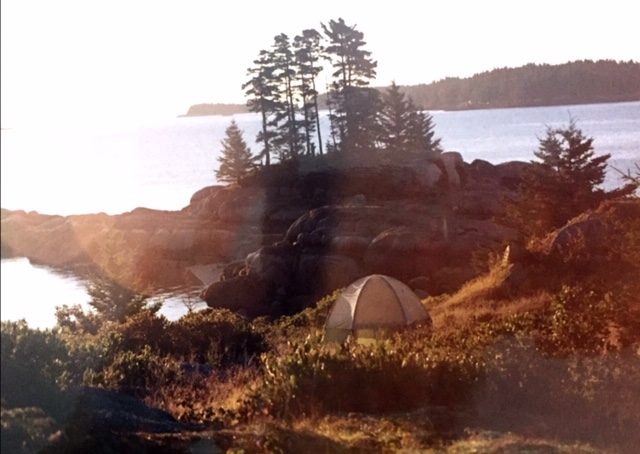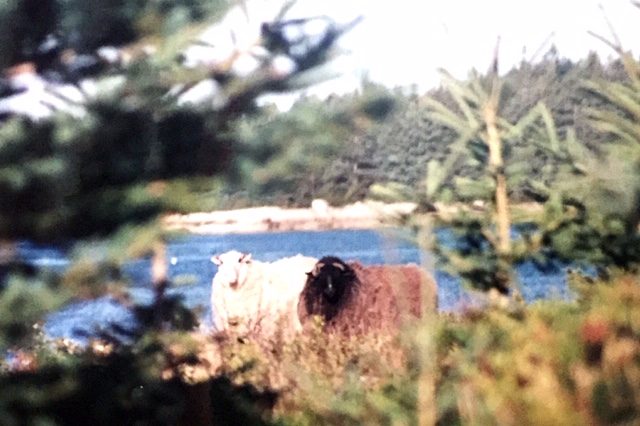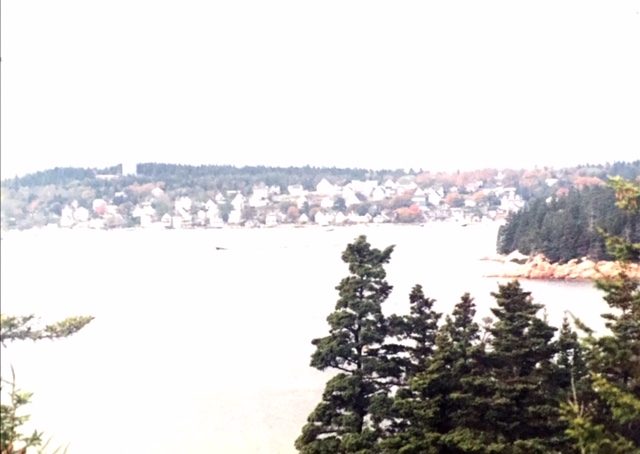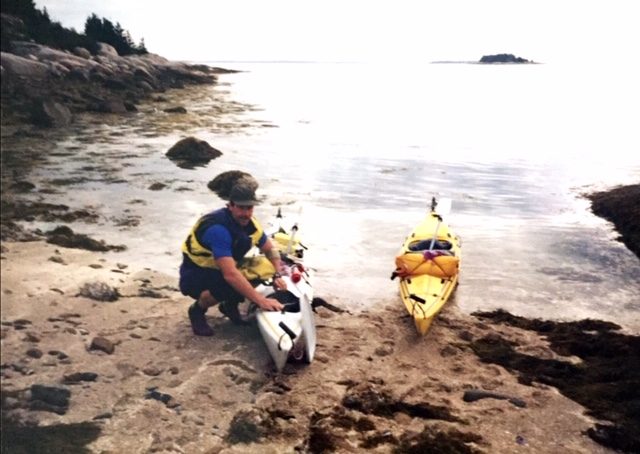Weather forecast, water temperature, air temperature, average tidal change—these are probably four of the most important factors when planning a kayak camping trip in an unfamiliar environment, especially for a trip off the coast of Maine in late September.
For our first kayak camping trip (circa 1995) we carefully considered 3 of the 4 factors.
We’d launched late in the day (see previous post) and didn’t have a route in mind. But we didn’t need to. Islands spread across the chart like freckles on the cheeks of a redhead. Our plan was to paddle until we found a hospitable-looking island, pull up, and camp.
Unusually warm daytime temps mixed with seasonally cool waters had resulted in a light fog settling over us and the bay. A lobster boat, engine droning yet invisible in the fog, closed on us quickly. But then it was far away. We realized we couldn’t trust sight or sound. We needed to get out of the channel.
We paddled towards the first island that materialized. But it had a boat dock. So did the next one. We didn’t want to trespass, or to be camping in someone’s backyard.
After paddling for what felt like miles, we finally found an island to call our own. As sunset dimmed to dusk, we pulled our kayaks up on a small, grassy meadow outlined by boulders trailing off into the bay. We pitched our tent about 20 feet from the shore, so that the whispering water would lull us to sleep.
The next morning, we crawled out of our tent and stepped into an entirely new world. The water lapping on the nice, grassy shoreline where we’d pulled up our kayaks the night before was gone. We walked to where it had been and peered over the edge of a ten foot cliff.

“Oh my god.” I looked with wide eyes at the beach below us. “Just think if it would have been low tide when we got here. We probably would have put the tent right there,” I said, pointing to a spot at the base of the cliff that was under water last night but now looked completely high and dry.
It was complete, ignorant luck that saved us from losing our kayaks and camping gear and having to scramble up a cliff face in our PJs in the middle of the night.
Once we recovered from the shock and pulled our kayaks off the edge, Mitch ventured out to take some photos. He was back in less than five minutes.
“I saw something.” He was out of breath. “I don’t know what it was. But it was big. It looked prehistoric.”
We decided to investigate together. Tip-toeing through the meadow, we sheltered behind shrubs and peeked out into the opening. I squinted. Looked again. And laughed. Mitch’s prehistoric mammoth looked back at us, chewing a mouthful of grass. Then its partner grabbed a mouthful of grass and studied us. They were big, all right. They were two of the biggest, wooliest sheep we’d ever seen.

After the excitement of discovering the first wooly mammoth in 5 million years, we hiked up a small knoll to assess the rest of our island. We looked across the water and there, just a short distance from us, sat the restaurants and hotels and houses and the beach of the town where we’d launched the day before. Less than a half a mile away.

We are slow learners and once more during this trip we didn’t consider the tide. This time, though, Mitch had to swim after the kayak.
Lesson learned: Tidal changes vary greatly from location to location. When you’re paddling somewhere unfamiliar, make sure you know the range as well as where you are in the tidal cycle.
by Jenifer Adams-Mitchell

